Research Brief: The Dangers of Glacial Lake Outburst Floods
1As temperatures in colder regions climb, there has been a noticeable increase in glacial lakes as well as increased risks of glacial lake outburst floods, or GLOFs. Glaciers are exceptionally sensitive to changes in climate, meaning that higher temperatures lead to mass losses in ice mass, creating glacial lakes in the areas previously occupied by the glacier. They can also occur on the glacier itself as pockets of ice melt and form lakes. Since the lakes are filled with warmer water, the presence of glacial lakes can promote further ice loss from the contributing glacier.
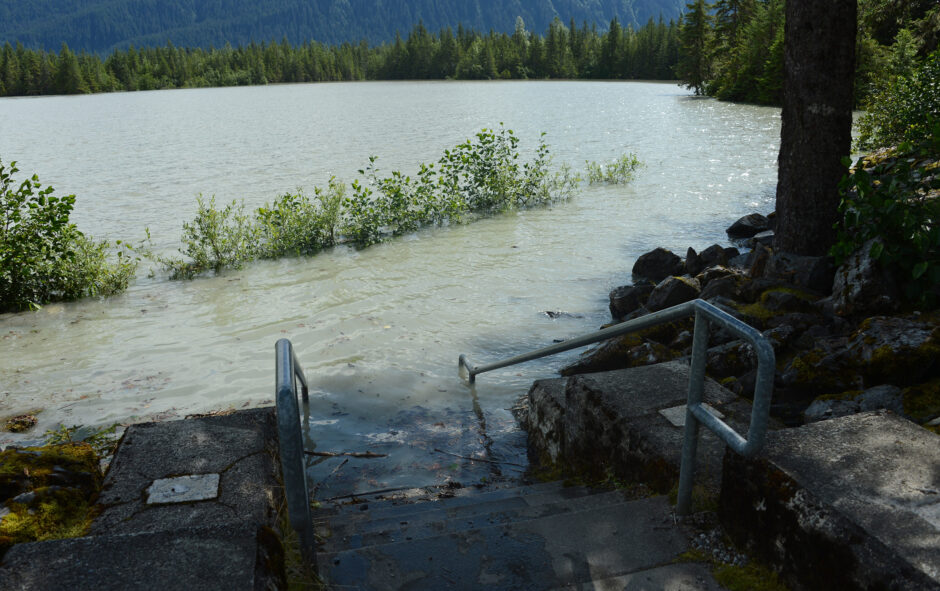
Mendenhall Lake in Juneau, Alaska rose above flood stage on Saturday, Aug. 1, 2020 amid a glacial outburst flood from Mendenhall Glacier. (Credit: James Brooks via Flickr CC BY 2.0)
Glacial lakes can also represent an environmental hazard for nearby communities in the form of GLOFs. Depending on how the lake was formed, it may be held in by ice or terminal moraines that can often be unstable or unable to contain high volumes of water. Some examples of events that can trigger GLOFS are:
- The barrier being breached by mass movement-induced impulse waves
- The lake being overfilled as a result of rain, snow and glacial runoff
- The degradation of the surrounding ice dam or moraine due to environmental conditions1
A 2023 study published in Nature Communications examined how many people globally are exposed to impacts from potential GLOFs. They also assessed where glacial lakes occur most frequently and the overall level of danger the GLOFs pose to regional safety. GLOFs represent a major hazard and have been the cause of significant losses of life over the years as these floods have grown in frequency. As such, it’s important to highlight impacted regions for future disaster risk reduction efforts.
Methods
The study combined “the most up-to-date lake condition, exposure, and vulnerability data available to quantify and rank contemporary (2020) damage potential from GLOFs at a global scale, adding to similar recent approaches for hydrometeorological floods.”1 They also analyzed the spatial distribution of population exposure to determine where populations are in relation to glacial lakes.
A 50 km runout path with potentially affected populations located within 1 km of a river course was used to spatially define impacted groups. Identifying hotspots and high-risk areas allows local and global disaster risk reduction groups to identify priority zones for mitigation and research.
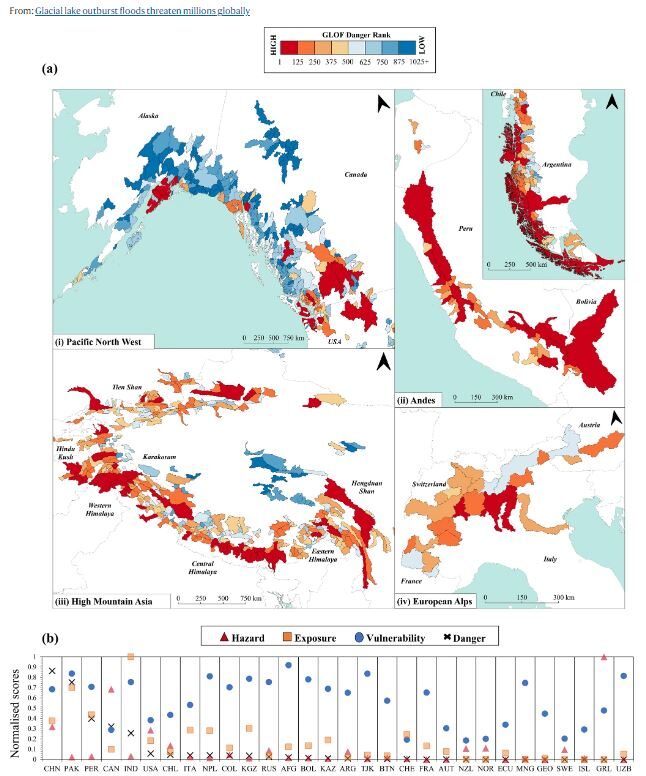
a. Spatial distribution of GLOF danger at basin scale from high (red) to low (blue) risk. b Final normalized scores of GLOF lake conditions (‘hazard’), exposure, vulnerability, and danger for each country, ordered from highest danger score (left) to lowest (right).1
Results
The study found that 15 million people globally are exposed to the potential impacts of GLOFS. Of those 15 million, more than half of the globally exposed population resides in just four countries: India, Pakistan, Peru and China. 1 Asia’s high mountain region (referred to as High Mountain Asia, or HMA) was considered to be the most exposed and lived closest to the lakes on average.
The establishment of early warning systems is one way that these regions can better understand GLOFs as well as be able to receive an early alert when flooding is likely. These systems can give citizens more time to evacuate and prevent the loss of life in these events.
Some regions, like Iceland and Sweden, contain a large number of glacial lakes but very small impacted populations–suggesting that the size and quantity of the glacial lakes did not hold as much weight in determining the impacts as much as the region’s ability to cope with GLOFs and other disasters.
Since infrastructure and regional stability were large indicators of higher potential impacts, efforts to protect these regions from GLOFs must be holistic, which means that risk assessment must consider each component of hazard exposure and vulnerability.
Source
- Taylor, C., Robinson, T.R., Dunning, S. et al. Glacial lake outburst floods threaten millions globally. Nat Commun 14, 487 (2023). https://doi.org/10.1038/s41467-023-36033-x




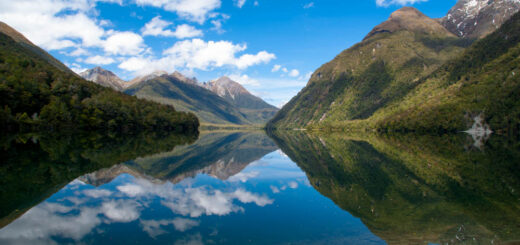
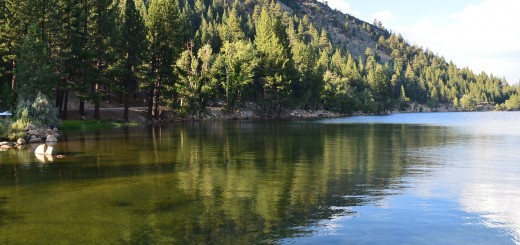
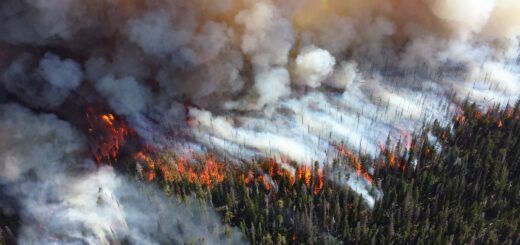
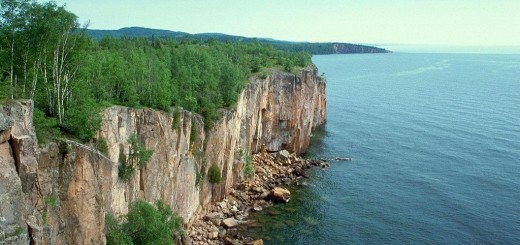



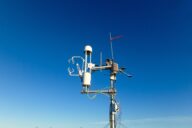


[…] mass loss as a result of rising temperatures has led to an increased frequency of glacial outburst floods (GLOFs), making glacial mass declines a popular subject to research in impacted regions. […]